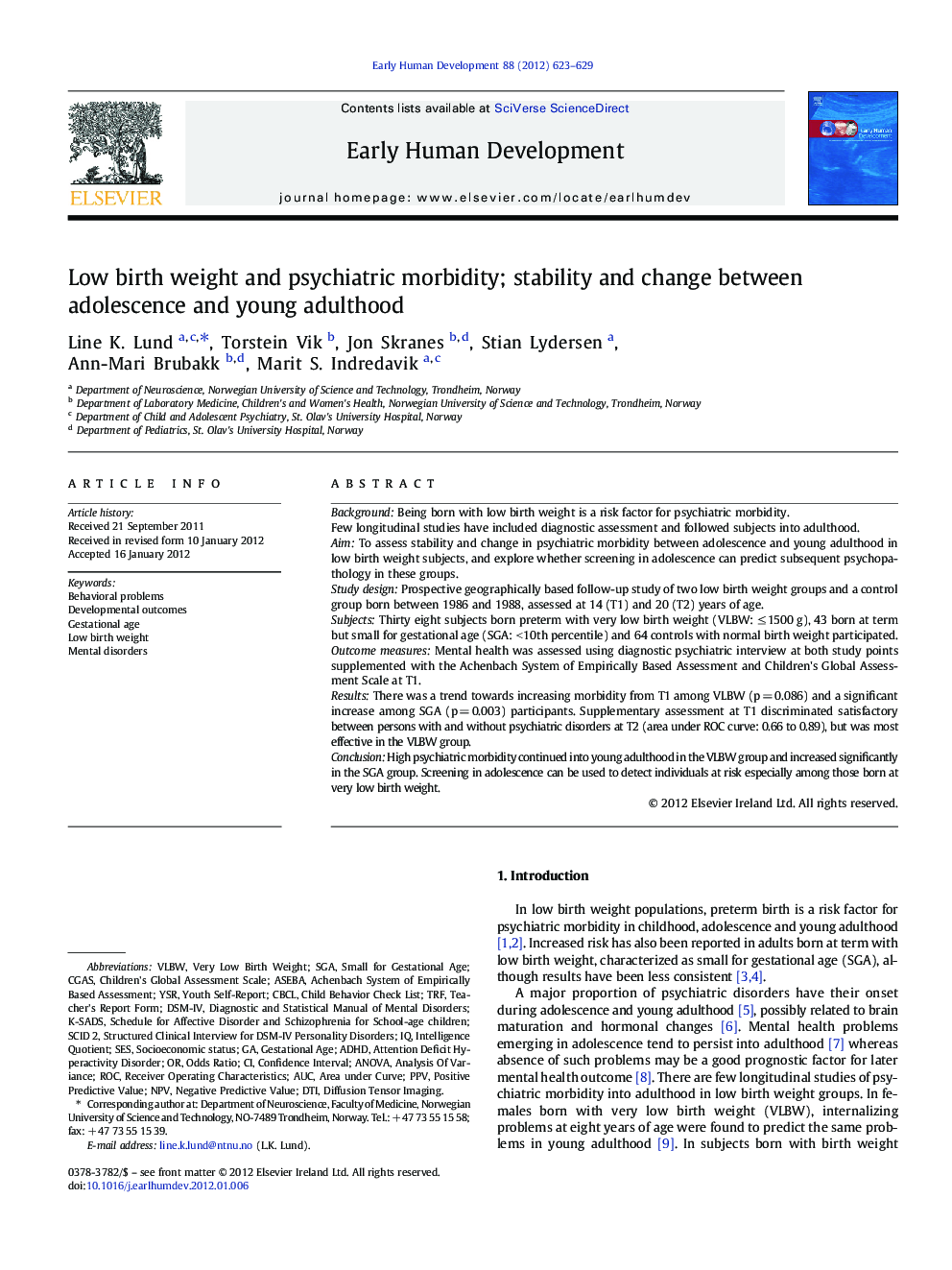| Article ID | Journal | Published Year | Pages | File Type |
|---|---|---|---|---|
| 3916849 | Early Human Development | 2012 | 7 Pages |
BackgroundBeing born with low birth weight is a risk factor for psychiatric morbidity.Few longitudinal studies have included diagnostic assessment and followed subjects into adulthood.AimTo assess stability and change in psychiatric morbidity between adolescence and young adulthood in low birth weight subjects, and explore whether screening in adolescence can predict subsequent psychopathology in these groups.Study designProspective geographically based follow-up study of two low birth weight groups and a control group born between 1986 and 1988, assessed at 14 (T1) and 20 (T2) years of age.SubjectsThirty eight subjects born preterm with very low birth weight (VLBW: ≤ 1500 g), 43 born at term but small for gestational age (SGA: < 10th percentile) and 64 controls with normal birth weight participated.Outcome measuresMental health was assessed using diagnostic psychiatric interview at both study points supplemented with the Achenbach System of Empirically Based Assessment and Children's Global Assessment Scale at T1.ResultsThere was a trend towards increasing morbidity from T1 among VLBW (p = 0.086) and a significant increase among SGA (p = 0.003) participants. Supplementary assessment at T1 discriminated satisfactory between persons with and without psychiatric disorders at T2 (area under ROC curve: 0.66 to 0.89), but was most effective in the VLBW group.ConclusionHigh psychiatric morbidity continued into young adulthood in the VLBW group and increased significantly in the SGA group. Screening in adolescence can be used to detect individuals at risk especially among those born at very low birth weight.
